The best James Bond films – ranked
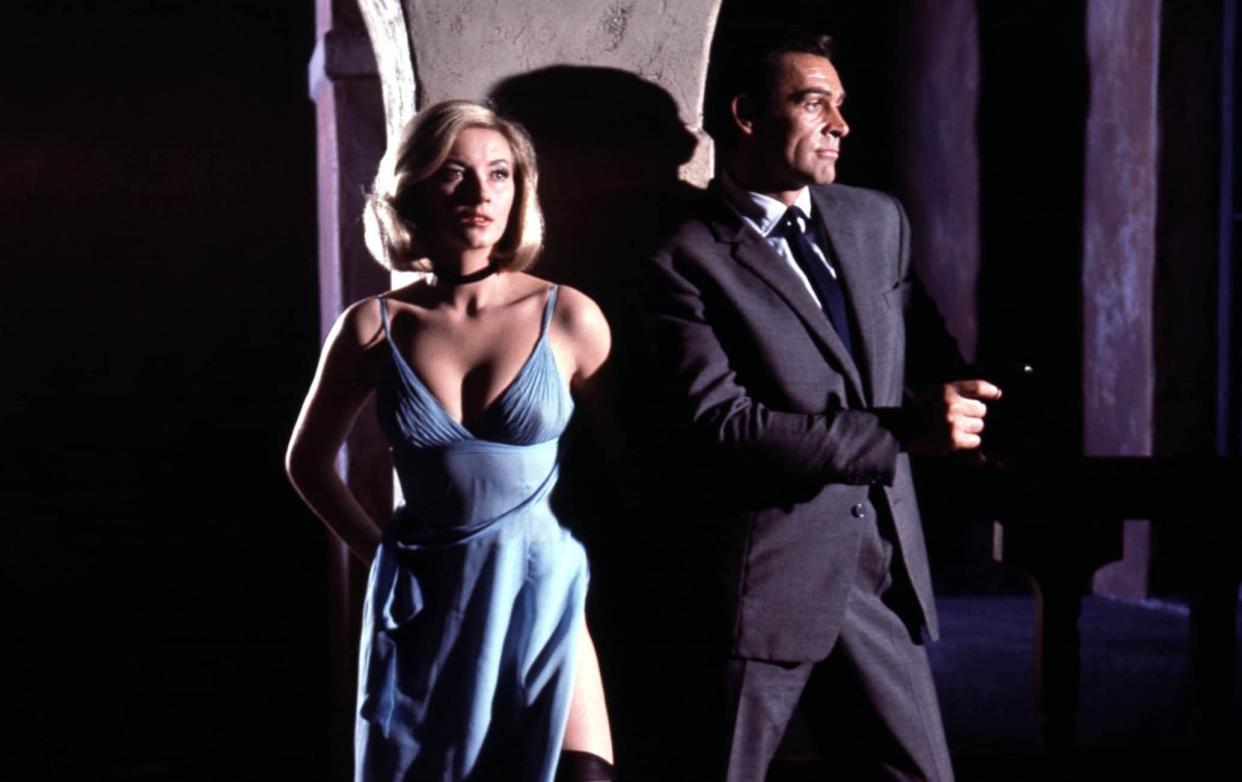
- Oops!Something went wrong.Please try again later.
- Oops!Something went wrong.Please try again later.
- Oops!Something went wrong.Please try again later.
- Oops!Something went wrong.Please try again later.
- Oops!Something went wrong.Please try again later.
The shape-shifting nature of the James Bond franchise makes it a window on each era’s vogues. Some of these fashion statements, comic stylings and approaches to action choreography have held up splendidly; others appallingly.
When settling on a ranking for all 25 films – we’ve excluded the series outliers (the 1967 Casino Royale and the independently-produced Never Say Never Again) – it’s hard to be definitive: many people might be kinder overall on the Pierce Brosnan era, or harsher on Roger Moore.
We’ve made the case for at least one entry that’s unfairly loathed, and dinged a few that have bigger flaws than generally gets admitted. By the time the next one comes out, maybe we’d reshuffle them all over again. But for now, here they sit.
25. Die Another Day (2002)
The plot: After being captured by a North Korean army colonel and spending 14 months in prison, Bond comes to Cuba to puzzle out the involvement of a diamond baron, Gustav Graves (Toby Stephens), who is subsidising a nuclear attack on London. He is helped by CIA agent Jiacinta “Jinx” Johnson (Halle Berry).
The errors were endless. We could focus on that whole finale – a morass of abysmal CGI, in and around the “invisible car”, and Brosnan surfing a tsunami over a glacier. The cat-fight between Berry and Rosamund Pike was hardly preferable, and the script throughout was a nadir, topped only by Lee Tamahori’s impressive knack for making it a near-constant eyesore. Berry in a bikini may have lifted the box office, but it was never more apparent in Bond’s whole history that a change was needed.
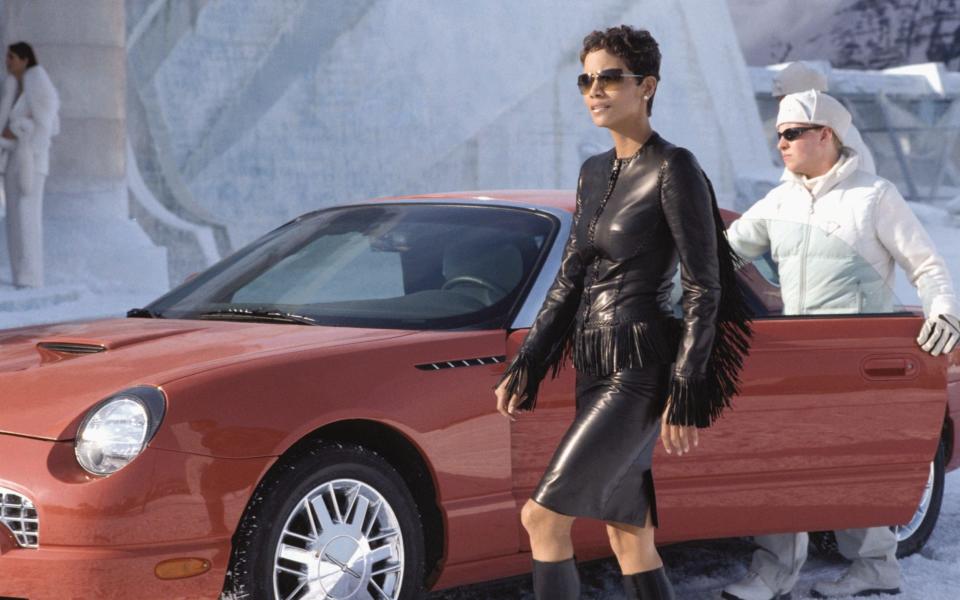
24. Moonraker (1979)
The plot: A space shuttle on loan to the UK is hijacked mid-air. Bond’s investigation leads him to the manufacturer Hugo Drax (Michael Lonsdale), who is plotting to wipe out the world’s population from space, and recreate our species as a master race.
There’s not much to redeem this, other than Lonsdale’s purring inflections as billionaire eugenicist Hugo Drax. ‘Bond in space’ is much less of an enticement than the producers assumed, even leaning into sub-Barbarella naffness – by giving Richard Kiel’s Jaws a ridiculous girlfriend with pig-tails, say. It was a poor show from returning director Lewis Gilbert, from Lois Chiles as astronaut/CIA agent Holly Goodhead, and from Moore – though his delivery of “take a giant step for mankind” at the end is at least amusingly chummy.
23. Spectre (2015)
The plot: Bond follows a trail of clues leading him to Blofeld (Christoph Waltz), who is going by his birth name “Franz Oberhauser” in Rome. Madeleine Swann (Léa Seydoux) agrees to share her information about SPECTRE and help Bond take the organisation down.
The Day of the Dead prologue is a humdinger, all right – it’s just a pity that absolutely everything else is such a stodgy let-down. This is easily the dullest Daniel Craig entry, and much of that is legible right on his face: he looks trapped at a steroidal business convention, miles away from enjoying the ride of his life. The plotting was so broken, the ‘surprise’ casting of Waltz as Blofeld a predictable bust, and instead of a great car chase around Rome at night, we got a jeopardy-free Jaguar advert.
22. Tomorrow Never Dies (1997)
The plot: The media baron Elliot Carver (Jonathan Pryce) is engineering a war between the UK and China, with the end goal of gaining the exclusive broadcasting rights in China for the next century. Bond has other ideas.
A pivot into chintzy soullessness at the wrong moment for the promising Brosnan tenure, this is rather summed up by the main chase involving a BMW being remote-controlled around a multi-storey car park (Brent Cross, no less). Too many other aspects feel gimmicky and ‘state of the art’ in instantly dated ways; Pryce is smug and silly as warmongering Murdoch-a-like Elliot Carver, and the set-bound climax on his stealth ship is crashingly drab. The only plus is Michelle Yeoh, but isn’t she always?
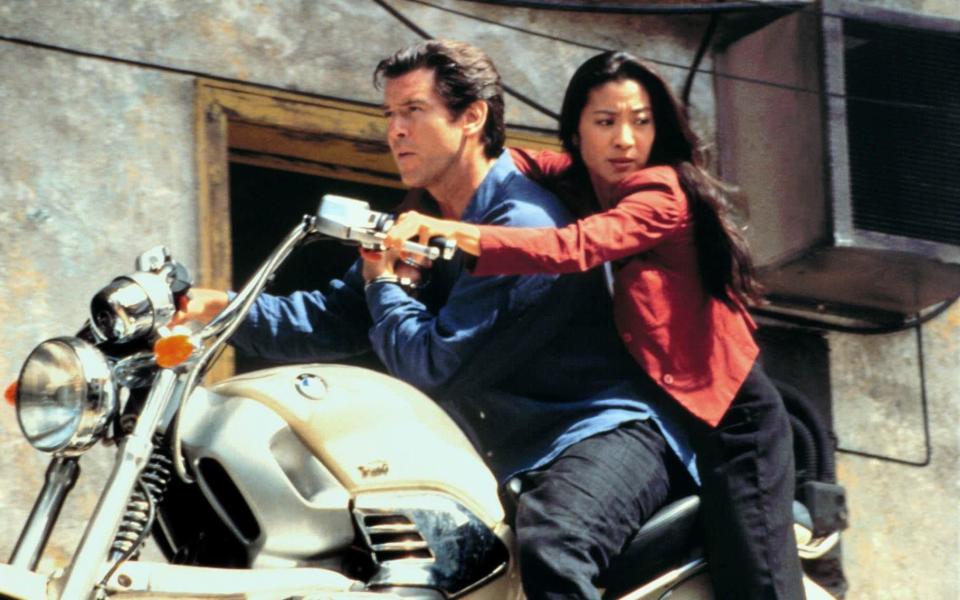
21. The Man with the Golden Gun (1974)
The plot: A golden bullet etched “007” is sent to MI6, suggesting that Bond is on the hit list of famed assassin Francisco Scaramanga (Christopher Lee). Seeking to turn the tables, Bond pursues him from Beirut to Macau and Bangkok, before a showdown on Scaramanga’s private island.
Half-Bond, half-Fantasy Island, complete with future star of that show Hervé Villechaise as Nick Nack, minion here to Lee’s titular three-nippled mastermind. These early Moore films were certainly trying for distinct identities, but this one imagines funhouse psychedelia will compensate for a shrug of a plot; the decorative roles for Maud Adams and Britt Ekland (who gets shoved unceremoniously into a boot) give it a particularly tacky Carry On quality.
20. The World is Not Enough (1999)
The plot: Bond is assigned to protect the oil heiress Elektra King (Sophie Marceau) after the murder of her father by the terrorist Renard (Robert Carlyle). However, the two are in cahoots, planning to trigger a nuclear meltdown in Istanbul to send petrol prices sky-rocketing.
The fact that this is Brosnan’s second best is a back-handed testament to the iffy 1990s production values that bedevilled all of them, but it does have assets: Marceau brings mischief and unpredictability to her role, and we certainly get a lot of things exploding. Only in the Bondiverse might Denise Richards be a brilliant nuclear physicist, and named Christmas Jones to set up the cheekiest punchline. It certainly tries to have a plot; whether we can entirely follow it is another matter.
19. No Time to Die (2021)
The plot: Bond is called away from a peaceful retirement in Jamaica to rescue a scientist kidnapped by SPECTRE, who works for the terrorist Lyutsifer Safin (Rami Malek). Bond’s pursuit of Safin embroils Madeleine Swann in potential retribution against the man who murdered her mother.
Credit where it’s due: Craig raised his game manfully for this send-off, perhaps cheered up by finally knowing he could quit. The excellent parts are all too brief, though – the bit in Havana with Ana de Armas shouldn’t stand out as much as it does. It’s because the film, and Bond, are carrying around so much baggage: must every surviving figure in the mythos get roped into gratuitous chit-chats? The script never makes sense of Safin at all; nor does Malek. (Read our No Time to Die review)

18. Thunderball (1965)
The plot: SPECTRE agent Emilio Largo (Adolfo Celi) steals two atomic bombs from a NATO plane to hold the organisation to ransom. Bond tracks him down to recover the bombs in the Bahamas.
This made a fortune in its day, but now feels decidedly bloated: the aquatic action that was a USP in 1965 has been lapped by many blockbusters since. It’s an average entry, with a villain (Celi) and female lead (Claudine Auger) who verge on being forgettable pub trivia answers, though it’s buoyed up by the vigour of John Barry’s score, even when his director (Terence Young) is stumped for inspiration. Because it did so well, it’s the one a rival production company remade as Never Say Never Again (1983).
17. Licence to Kill (1989)
The plot: On the way to Felix Leiter’s wedding in Florida, he and Bond capture the drug lord Frank Sanchez (Robert Davi), who bribes a DEA agent to escape, coming back to torture Leiter and murder his bride. Vowing to get revenge, Bond goes rogue.
This was the first to get a 15 certificate, because of Eon Productions’s decision to pump up the violence in the days of Schwarzenegger and Chuck Norris. Commercially, this was costly – it was the lowest-grossing Bond for years and years. A rather nasty edge remains – fitting, though, for an entry with Bond settling a purely personal score. There’s a pulpy pull to that, and multiple good villains: edging out Davi’s iguana-stroking heavy, we get a boxfresh Benicio Del Toro and the marvellously weaselly Anthony Zerbe.
16. Diamonds Are Forever (1971)
The plot: To expose a diamond smuggling ring, Bond impersonates one of its members in Amsterdam. The diamonds are coveted by Blofeld (Charles Gray) to create a laser satellite, with which he intends to achieve nuclear supremacy from his base on an oil rig.
Sean Connery got a record $1.25m to come back after the Lazenby experiment flopped. Guy Hamilton’s taste for camp was never more in evidence – half of it is set in Vegas, so opportunities to go over the top are legion, and Gray’s take on Blofeld is nothing if not winkingly devilish. Of course he has two gay henchmen, Wint and Kidd. Anyone who feels like objecting to all the coarser trappings of the series will have a field day here, but it seems to laugh right back in our faces. Plus, Shirley Bassey!
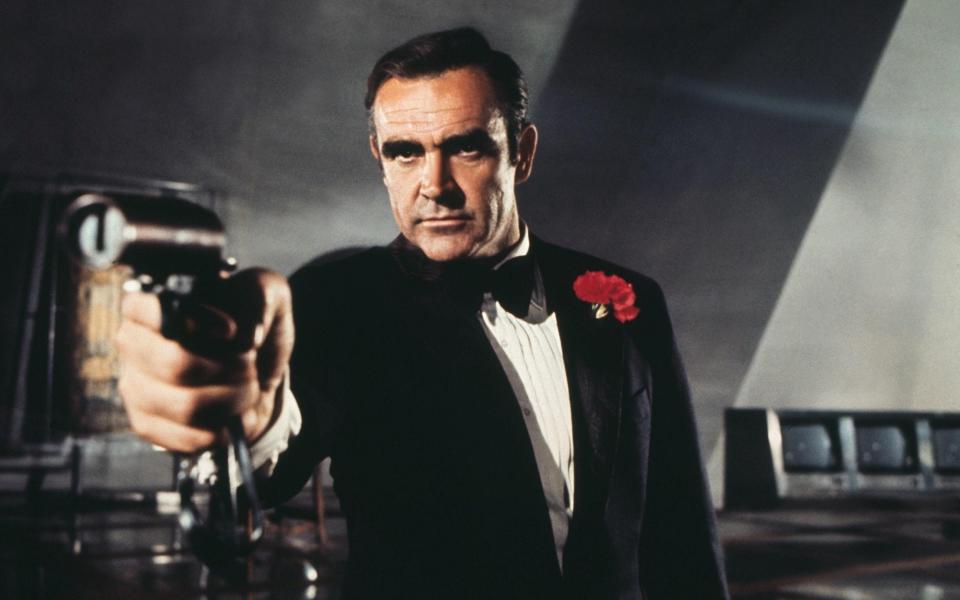
15. Octopussy (1983)
The plot: Pending a nuclear attack on NATO, Bond enlists the help of the jewel smuggler Octopussy (Maud Adams), an associate of the exiled Afghan prince Kamal Khan (Louis Jourdan). Bond must infiltrate Octopussy’s circus to stop the bomb going off that would pave the way for a Soviet invasion.
It shouldn’t work at all – this is the one with Desmond Llewelyn’s Q riding in on a hot air balloon and scooping up female cult members as if he’s Hugh Hefner. But parts of Octopussy are huge fun, and even tense – 009, dressed as a clown, being chased through East Berlin; Moore breaking a rare sweat as a timebomb ticks down at the circus; Steven Berkoff’s whole role as a hilariously hammy Soviet general. The song, meanwhile, is soft-core sax heaven. Very 1983.
14. Skyfall (2012)
The plot: M (Judi Dench) is pressured to retire after the theft of a hard drive, containing the identities of all active NATO agents, by the cyberterrorist Raoul Silva (Javier Bardem). Silva is captured off Macau but escapes in London, and pursues a vendetta against M dating back to his MI6 days.
It’s going so well until Bardem busts out in the tube tunnel. His three earlier scenes are majestic, and there’s visual wonderment, especially in the Shanghai section (courtesy of Roger Deakins, the most qualified cinematographer ever to take charge). It’s Silva’s subsequent masterplan – roughly, to chase Dench up to the Highlands, and… that’s it? – which makes the back end of Skyfall so feeble, and the film as a whole so overrated. Sam Mendes freights it with state-of-the-nation speechifying; humour is at a premium. (Read our Skyfall review)
13. A View to a Kill (1985)
The plot: Microchip manufacturer Max Zorin (Christopher Walken) plans to flood Silicon Valley to gain a monopoly. Bond infiltrates his mine to thwart this scheme, while fending off numerous attempts to kill him by Zorin’s lover and chief henchwoman, May Day (Grace Jones).
Moore, at 58, is well and truly past it here, and indeed, barely in it – almost any scene requiring him to run, jump, or do anything much deployed a very obvious stunt double. It’s a bit of a shame, because he’s facing two of the best villains ever to turn up in the series. Their complicity is electric: Walken’s gleefully psychotic Max Zorin and Jones’s ferocious Mayday, whose 180º allegiance shift, in the mine, at the end is a flex that really works.
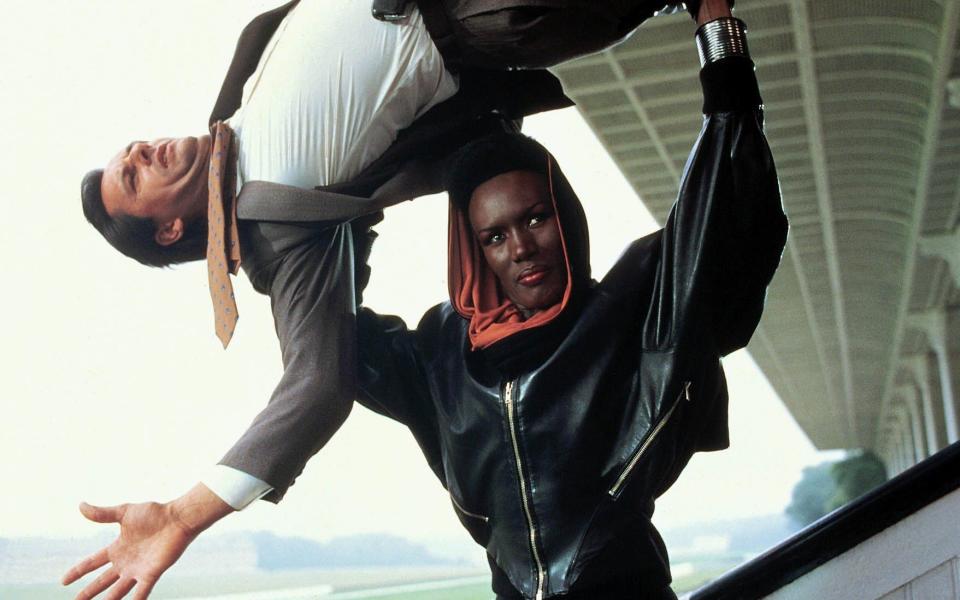
12. GoldenEye (1995)
The plot: 007’s partner Alec Trevelyan (Sean Bean) is seemingly killed on a mission in 1986. Nine years later, Bond realises that he faked his death, and seeks vengeance against the British state for the murder of his parents, using an armed satellite nicknamed ‘GoldenEye’ to destroy financial records.
This certainly did the required job of getting bums back on seats, even if it hasn’t held up as swimmingly as one might hope. Terrific stuntwork and reliable pace from Martin Campbell get us off to the races; but Bean’s Trevelyan is the most anodyne of antagonists, the victim of a generally half-baked script. Thank God, then, for Famke Janssen, a total scream as vampish assassin Xenia Onatopp, who gets her rocks off by crushing men between her thighs.
11. For Your Eyes Only (1981)
The plot: Britain’s Automatic Targeting Attack Communicator (ATAC) is sunk in the Ionian sea, and a race ensues to retrieve it. Greek business magnate Aris Kristatos (Julian Glover) diverts Bond’s suspicions but is secretly working with the KGB, who could use the ATAC to control British submarines.
If the Moore Bonds kept pinging between sensibilities, the route they went down here is surprisingly romantic, downplaying sauciness and aiming for a more serious tone. It invests particularly well in the tragic backstory of Carole Bouquet’s crossbow-wielding Melina Havelock, with her burning grief over the murder of her parents; she’s top echelon as Bond’s women go. Topol, crunching on his pistachios, is an amiable sidekick, and the climax atop a Greek monastery is pleasingly outdoorsy.
10. Casino Royale (2006)
The plot: Bond is assigned to thwart Le Chiffre (Mads Mikkelsen), a financier to the world’s most dangerous terrorists, by bankrupting him at a high-stakes poker game in Montenegro. He is helped by the British Treasury agent Vesper Lynd (Eva Green), who oversees the $10m buy-in.
Once again, Martin Campbell resuscitated the whole show, and did it this time with a film that’s two-thirds terrific. Craig didn’t yet look fed up of the whole enterprise, as he would soon; he’s a credible bruiser with more animus than charm. The film does pretty well right down the cast list – Green has real va-va-voom; Mikkelsen is reptilian to the last. A pity his exit entails a premature plot twist not even involving Bond, then: a schoolboy error from the scribes.
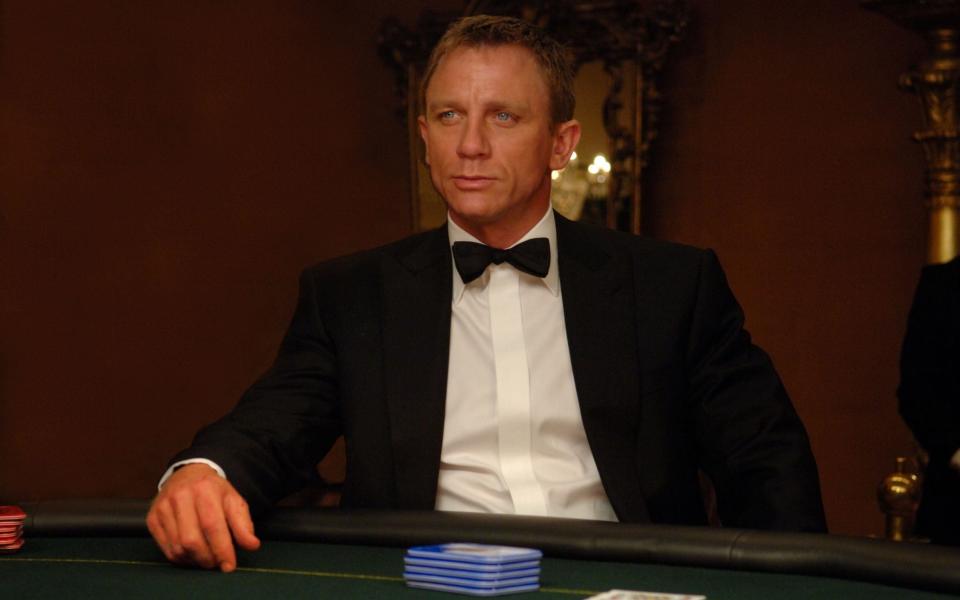
9. You Only Live Twice (1967)
The plot: An unidentified spaceship hijacks a NASA capsule from orbit. This is the dirty work of SPECTRE, who plan to trigger a Soviet-American war by provoking mutual suspicions; 007 performs recon in Japan to find their base of operations.
Bond sets don’t come spiffier than Blofeld’s lair at the end here – the volcanic HQ under a sliding lake that Ken Adam designed. We’re spinning wheels a bit beforehand, and the Japanese ‘disguise’ for a fatigued Connery is obvious cancellation bait. Still, plenty of excitement is pending: the autogyro action on “Little Nellie”, most obviously. Donald Pleasence (a last-minute replacement for Czech actor Jan Werich) is a splendid Blofeld, too, with all the nattiest accessories, including his beloved piranhas. Tread carefully there.
8. Quantum of Solace (2008)
The plot: Bond follows a trail of breadcrumbs to the environmental entrepreneur Dominic Greene (Mathieu Amalric), who is assisting a coup in Bolivia in exchange for land rights, aiming to become the country’s sole water provider. Revenge for the murder of Vesper Lynd is never far from 007’s mind.
A real candidate for the most underrated Bond of the lot, if only because it’s widely dismissed as Craig’s biggest dud – when it’s arguably his best. They did have trouble with the WGA strike, and you can tell, but this compelled Craig and Marc Forster to think fast: the film bounds ahead briskly, never sinking into the overwritten interludes we’d get in the Mendes era. It’s jagged, spiky, and fuelled by bitter rage at Vesper’s death; eco-terrorist Greene being a rather puny villain just makes Craig see red all the more.
7. Dr. No (1962)
The plot: Reclusive scientist Dr Julius No (Joseph Wiseman) is using radio jamming to ruin America’s space programme. Bond is led to No’s underground base in Jamaica to stop him.
This isn’t quite the full recipe yet – what, no pre-credits sequence?! – and you can tell the budget ($1m) was modest. In many other ways, it did lay down the template, though. Ursula Andress coming out of the sea in Jamaica was a hard act to follow (though both Berry and Craig would pay her homage), and Wiseman does well, in his bone-dry way, as the titular mad scientist who sizes up Bond as a “stupid policeman”. Ken Adam was already on board to make his evil lab quite satisfying.
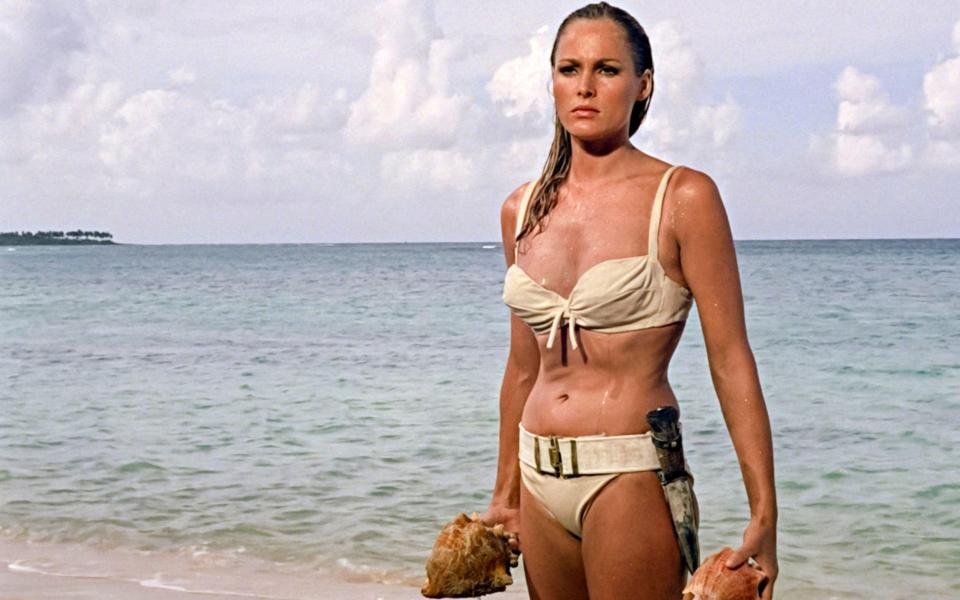
6. Live and Let Die (1973)
The plot: Within 24 hours, three MI6 agents are assassinated, in New York, New Orleans and San Monique. Bond traces the murders to the Caribbean Prime Minister Dr Kananga (Yaphet Kotto), a heroin mogul who intends to increase dependency with free giveaways, bankrupting his competitors.
In came Moore, with a risky gambit – Bond entering the realm of blaxploitation. It could have been hideous, and boundaries of taste are certainly... disrespected, but the trouble is: it’s a banger, just as much as the title track they ought to have let Shirley Bassey sing. The occult, voodoo and tarot elements have a sinister pungency, and Kotto is a fantastic choice as Kananga. We also get that rare thing in Bond, genuinely funny comic relief, from Clifton James as a redneck sheriff.
5. The Spy Who Loved Me (1977)
The plot: The Royal Navy’s Polaris submarine, carrying 16 nuclear warheads, mysteriously disappears. Joining forces with KGB agent Anya Amasova (Barbara Bach), Bond uncovers the masterplan of shipping tycoon Karl Stromberg (Curt Jürgens) to trigger a global nuclear war and establish a new civilisation underwater.
Most people’s favourite Moore – though for us, it’s close. This was shrewdly directed by Gilbert, tightly plotted on and off the submarine base, and played with more conviction than dear old Roger often summoned. He’s helped by how good the rest of the cast are: Bach is no slouch as his sharp-as-a-tack Soviet counterpart; Jürgens brings a sexual sadism to Stromberg that’s very Fleming; and Richard Kiel’s Jaws is the icing on the cake, even if they should have spared him the indignity of coming back for Moonraker.
4. The Living Daylights (1987)
The plot: Bond is tasked with helping a KGB general defect using the Trans-Siberian pipeline. He then learns that the defection was staged, and that Koskov (Jeroen Krabbé) has teamed up with a western arms dealer (Joe Don Baker) to supply the Soviets with weapons.
Just excellent all round, and unjustifiably neglected. You could say exactly the same about Timothy Dalton, the forgotten Bond, who managed to combine suavity, anger and a supple cleverness, especially in this film. The sophisticated plotting revolves around the defection-or-maybe-not of a renegade Soviet general (a wily Krabbé), but you’re just as likely to remember the smashing Maryam d’Abo as his cellist girlfriend, glorious snow chases, and all the thrills and spills of the Berlin Wall days.
3. On Her Majesty’s Secret Service (1969)
The plot: Blofeld (Telly Savalas) plans to hold the world to ransom, by brainwashing a group of women in the Swiss Alps into sterilising global food supplies. Bond sets out to assassinate him, and falls in love with a vulnerable countess (Diana Rigg), who is shot dead on the day of their wedding.
Poor George Lazenby – perfectly serviceable, if lacking Connery’s special sauce – took all the flak for this failing: was it really such heresy to cast an Australian? There’s so much else in it that works like gangbusters: some of John Barry’s best music, a fleet job from editor-turned-director Peter Hunt, and a gritty adaptation that follows Fleming diligently to the Swiss Alps, where women are, naturally, being turned into biological weapons. Rigg’s fiery heroine was obviously another huge point in the plus column.
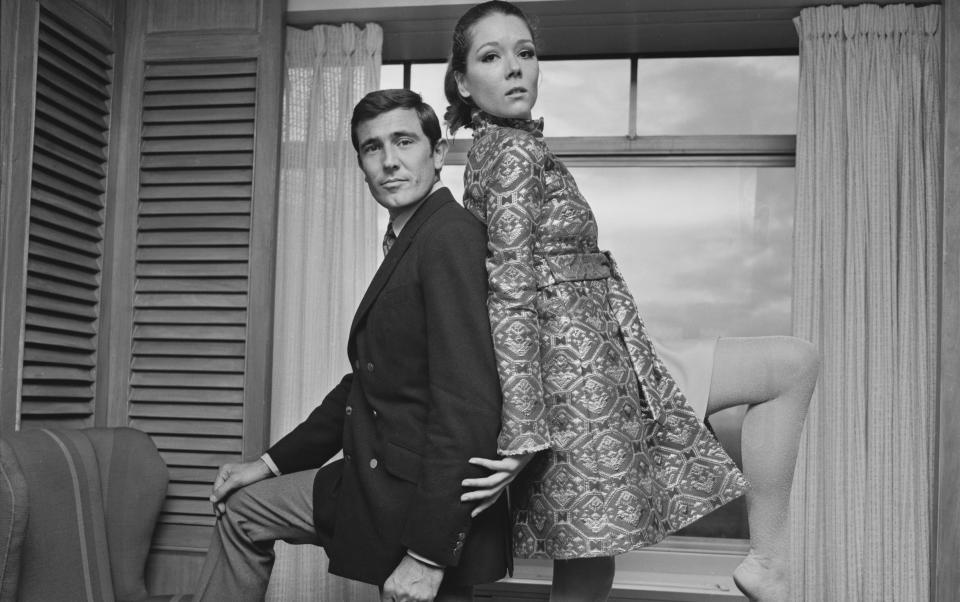
2. Goldfinger (1964)
The plot: Bullion dealer Auric Goldfinger (Gert Frobe) is smuggling gold, intending vastly to increase the value of his reserves by breaking into Fort Knox, and irradiating the vault with a dirty bomb from China. Bond must stop him, and persuade Goldfinger’s personal pilot Pussy Galore (Honor Blackman) to switch sides.
It leans into the fun, with peak Hamilton flair, and gets everything just right, from those very first trumpet blasts in the song, and indeed, even before that – with the “positively shocking” pre-title sequence that made them de rigueur. Connery is smoothly in charge, but also made to sweat, by that laser to the crotch; Blackman’s bounteous charisma makes Pussy Galore the least walkover-ish of all his romantic partners; and who doesn’t love Frobe, and Odd Job? Sequence after sequence snaps to attention, and Fort Knox is the perfect finale.
1. From Russia with Love (1963)
The plot: Bond is lured into a trap by SPECTRE, with the bait of a cryptography device they intend him to try and procure from the Soviet consulate in Istanbul. An assassin called Donald Grant (Robert Shaw) is recruited to shadow him and kill him during his escape on the Orient Express.
Fleming’s lethal tone was nailed to the wall here by Terence Young, who laced it with grit and danger: 007’s job feels fraught with real hazards, hardly ever the cavalier business it would become. There’s a commanding assurance to the plotting, and close-quarters tensions on the long train sequence that Hitchcock might have envied. The battle of wits between Connery and Shaw has a brilliantly civilised veneer before they’re at each other’s throats; Lotte Lenya’s Rosa Klebb is unforgettable; and both Daniela Bianchi and Pedro Armendáriz give it warmth, not just a deadly chill.
All the James Bond films are available on Amazon Prime Video

